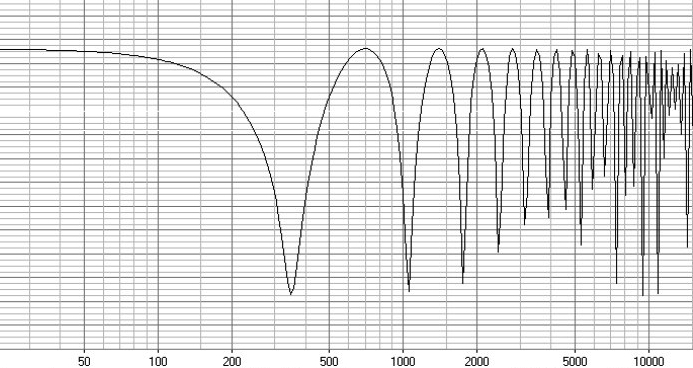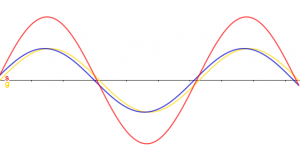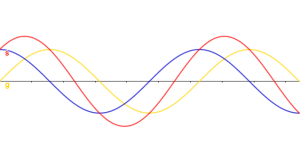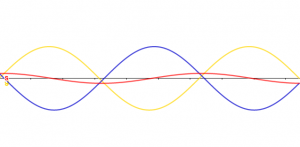
Acoustical interference and comb filtering
Interference is what music rooms imprint on the reproduction of our music.
Take a seat in the „sweet spot“ in front of two stereo loudspeakers. If both radiate the same frequency, their signals add up at your ears to a higher combined level:

Now slightly change your position closer towards one loudspeaker. The signals from the other loudspeaker arrives slightly delayed. Their combined level adds up less efficient:

In case the delay equals a halve wavelength of that same frequency, both signals cancel out at that listening position:

Now keep this virtual position and double the frequency (halving the wavelength), hence the delay equals a full wavelength. Therefore, both signals add up without cancellation.
Comb filtering:
Finally, let us consider what happens with just one loudspeaker and the floor reflexion.
The delay between direct and reflected sound is the same for all frequencies. Floor reflexion cancel some frequencies, contained in the direct sound of the loudspeaker and boost others.
The lowest frequency „f“ cancelled is determined by it’s halve-wavelength being equal to the geometric delay between direct and reflected sound. Twice that frequency (2*f) will be reinforced by the reflexion. 3*f will be cancelled, 4*f reinforced, 5*f cancelled, and so on. On a linear frequency scale, the effect of the delayed reflexion on the direct sound’s spectrum looks like that of a comb.
Usual living rooms add hundreds of delayed reflexions to the „direct sound“ generated by the loudspeakers. Since our ears have learned to live with reflexions, we can „hear through“ these reflexions. But they do have an influence on the sound’s perception.
What I find very interesting: there is no general rule how to design a listening room. How much reflected energy improves or harms our impression? From which direction of incidence, and how much delay? Diverse concepts are used in studios as well as at homes. There exist only few AES papers about this. It seems that different music prefers different room contribution. Similar to life music: Classical concert halls are more reverberant than multi-purpose halls.
What makes it even more complicated: We adapt to reflective environments. We will get back to this in the room acoustic chapters.